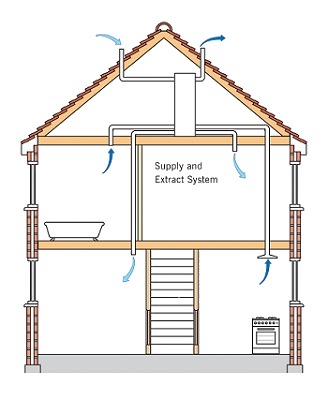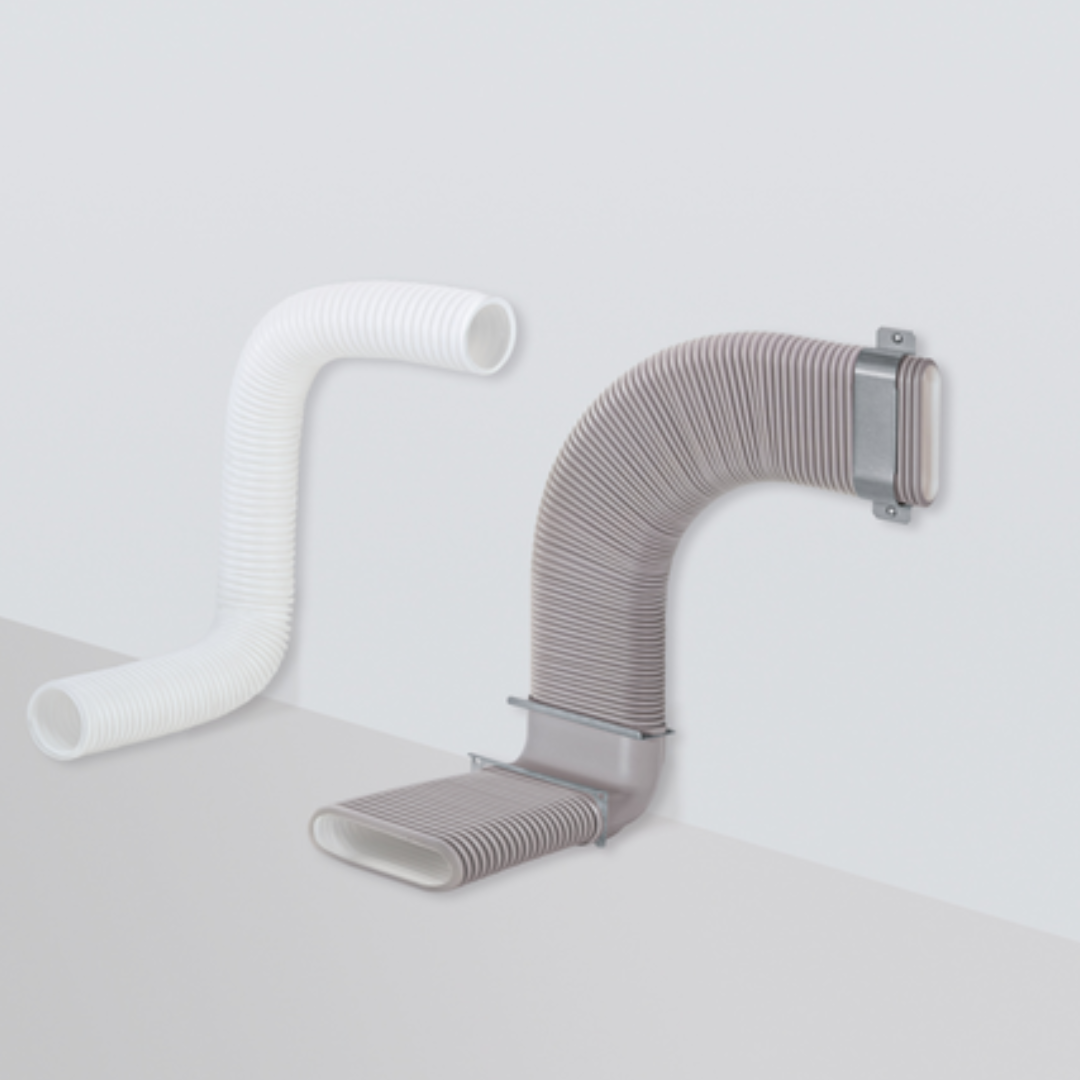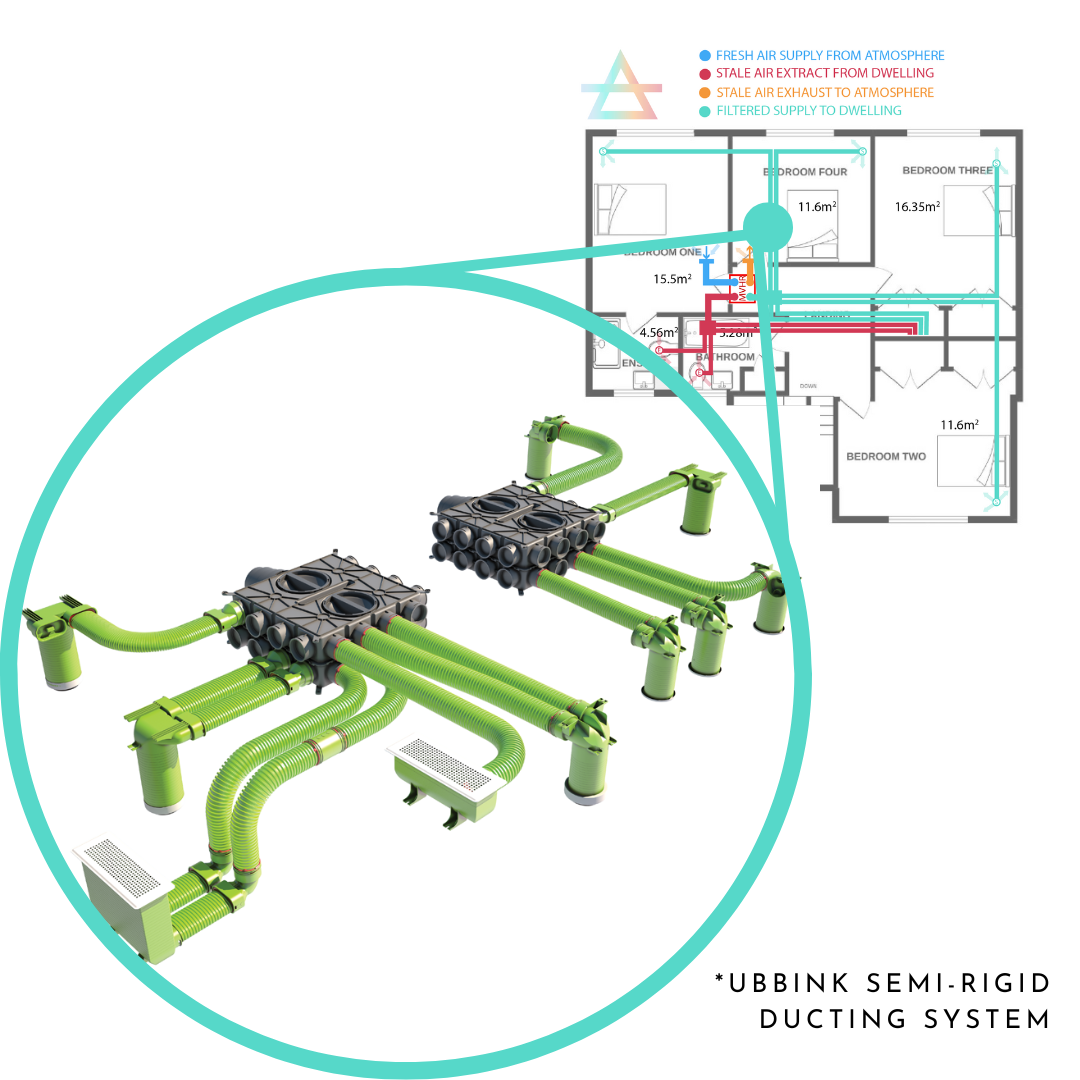If you are thinking about fitting a MVHR Heat Recovery system in your home, you may be wondering what the best ducting is for you? The most popular and practical option is semi-rigid ducting, and we’re going to explain why…
What is MVHR?
First things first, what is MVHR? An MVHR system is a ventilation system that removes stale air, pollution and excess moisture out of your home from ‘wet rooms’ (bathrooms, kitchen, utility) and brings in air from outside, filters it for a healthier indoor air quality and replenishes the air in habitable rooms (bedrooms and living room).
The heat from the moisture and humidity that is extracted out of the ‘wet rooms’ is then recovered and put back into your home with the filtered air to help keep your home warm during the winter. However, during the warmer months ‘Summer Bypass’ will kick in and no heat will be recovered, leaving you with just filtered, comfortable air.

What is semi-rigid ducting?
Semi-rigid ducting is an alternative to solid plastic or metal ducting. It offers a lot more flexibility and is better and fitting into smaller and more awkward spaces, this is what makes it so perfect for homes and domestic spaces.
MVHR systems are comprised of units, ducting and filters and they all make the pieces of the puzzle. Ducting can make the difference between a system that’s working quietly in the background keeping your home comfortable and a system that requires constant maintenance and attention. Our team are always able to make recommendations during the design process to suit your home, needs and budget.

Why semi-rigid ducting?
Apart from its amazing flexibility and ability to fit into smaller spaces, there are a lot more benefits to semi-rigid ducting.
Strength & stability – One of the benefits of the flexibility of its strength and robustness, it’s flex makes it more resistant to kinks and cracking and it can withstand pressures of up to 13 kN/m2 of force.
Mechanical airtight connections - The clip together peces and the manifold make it naturally airtight, without the use of sealent or adhesive
Made of virgin PE plastic - This helps ensure quality and durability (Ubbink semi-rigid ducting)
Installation time – Semi-rigid ducting saves up to 70% time during the installation price and this means you’ll save both time and money on installation and labour costs
No risk of corrosion – Unlink metal ducting, there is no risk of corrosion or rusting, making it more practical and suitable for long-term use
Easy to clean – This is what makes it so suitable for social housing and housing association
Reduced noise – Due to low velocity it offers lower system pressure drop and lower noise levels
No need for joins or bends - The need for expensive bends and joins to fit round corners is a thing of the past with semi-rigid ducting, it can be manipulated to fit almost any space

Why is all this important?
All of this is important because it takes all of the aspects to create an effective MVHR system and in your home semi-rigid ducting could make the world of a difference.
Is it high performance?
Yes! Semi-rigid ducting is high performance and allows for a system to run at its full potential. They flexibility allows air to travel throughout your home and without risk of cracks or breaking it means all the stale air is fully extracted and all the fresh air is bought in.
Semi-rigid ducting offers zero leakage, meaning you are getting the best indoor air quality for your home as well as making your home as energy efficient as possible by ensure all recovered heat during winter is put back into your home (your MVHR system costs just £2.50 a month to run and can save you up to £300 a year in energy bills!).
Why does this matter for regulations?
The regulation this makes the biggest difference to is being Passivhaus certified. Passivhaus homes and buildings are built with energy efficiency at the focus – they need 75% heating production space and generate heat by being built to the highest standard and being so airtight, the heat is retained inside the house.
With Passivhaus homes/buildings being so airtight, they require MVHR as they are so airtight this is the only way to have ventilation and have air supplied and extracted to your home. A Passivhaus home is super energy efficient and having the right MVHR and ducting solution can make the world of a difference and recover the most heat for maximum comfort.
 Share
Share
Back to Blog